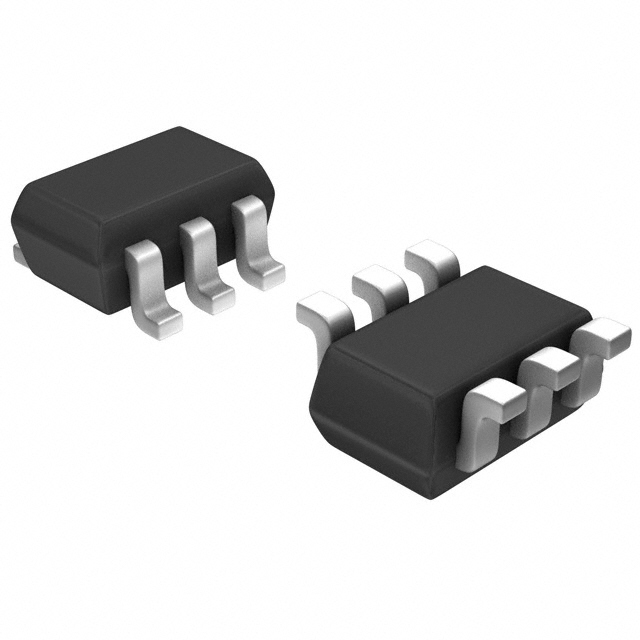Viz Specifikace pro podrobnosti o produktu.

BAS40BRW-7: Diode Product Overview
Introduction
The BAS40BRW-7 diode is a crucial component in electronic circuits, belonging to the category of small signal Schottky diodes. This entry provides an overview of the basic information, specifications, pin configuration, functional features, advantages and disadvantages, working principles, application field plans, and alternative models of the BAS40BRW-7 diode.
Basic Information Overview
- Category: Small Signal Schottky Diode
- Use: The BAS40BRW-7 diode is commonly used in applications requiring high switching speeds and low forward voltage drop.
- Characteristics: It exhibits low leakage current and fast switching capabilities, making it suitable for high-frequency applications.
- Package: SOD-323 (SC-76)
- Essence: The BAS40BRW-7 diode is designed to provide efficient rectification and signal demodulation in electronic circuits.
- Packaging/Quantity: Available in tape and reel packaging with a quantity of 3000 units per reel.
Specifications
- Forward Voltage Drop: 0.32V at 1mA
- Reverse Voltage: 40V
- Maximum Continuous Forward Current: 200mA
- Reverse Recovery Time: 4ns
- Operating Temperature Range: -65°C to +125°C
Detailed Pin Configuration
The BAS40BRW-7 diode has a standard SOD-323 (SC-76) package with three terminals: 1. Anode 2. Cathode 3. Not connected (NC)
Functional Features
- Fast Switching Speed: Enables rapid signal processing in high-frequency applications.
- Low Forward Voltage Drop: Minimizes power loss and enhances energy efficiency.
- Low Leakage Current: Ensures minimal power dissipation in reverse bias conditions.
Advantages and Disadvantages
Advantages
- High-Speed Operation
- Low Power Dissipation
- Compact Package Size
Disadvantages
- Limited Maximum Forward Current
- Sensitivity to Overvoltage Conditions
Working Principles
The BAS40BRW-7 diode operates based on the Schottky barrier principle, where the metal-semiconductor junction facilitates fast switching by reducing charge carrier storage time.
Detailed Application Field Plans
The BAS40BRW-7 diode finds extensive use in the following applications: - High-Frequency Signal Demodulation - Voltage Clipping Circuits - RF Mixer Circuits - Signal Rectification in Communication Systems
Detailed and Complete Alternative Models
Some alternative models to the BAS40BRW-7 diode include: - BAT54 series - BAV70 series - 1N5711 series
In conclusion, the BAS40BRW-7 diode serves as a critical component in electronic circuits, offering fast switching speed, low forward voltage drop, and low leakage current. Its compact size and efficient performance make it well-suited for various high-frequency applications.
Word Count: 411
Seznam 10 běžných otázek a odpovědí souvisejících s aplikací BAS40BRW-7 v technických řešeních
What is the maximum forward voltage of BAS40BRW-7?
- The maximum forward voltage of BAS40BRW-7 is typically 0.5V at a forward current of 0.2A.
What is the reverse breakdown voltage of BAS40BRW-7?
- The reverse breakdown voltage of BAS40BRW-7 is typically 75V.
What is the maximum continuous forward current for BAS40BRW-7?
- The maximum continuous forward current for BAS40BRW-7 is 0.2A.
Can BAS40BRW-7 be used in high-frequency applications?
- Yes, BAS40BRW-7 is suitable for high-frequency applications due to its fast switching characteristics.
What is the storage temperature range for BAS40BRW-7?
- The storage temperature range for BAS40BRW-7 is -55°C to +150°C.
Is BAS40BRW-7 RoHS compliant?
- Yes, BAS40BRW-7 is RoHS compliant, making it suitable for environmentally conscious designs.
What is the typical junction capacitance of BAS40BRW-7?
- The typical junction capacitance of BAS40BRW-7 is 2.5pF at a reverse bias of 0V and a frequency of 1MHz.
Can BAS40BRW-7 be used in rectification circuits?
- Yes, BAS40BRW-7 is commonly used in rectification circuits due to its low forward voltage and fast recovery time.
What is the maximum reverse leakage current of BAS40BRW-7?
- The maximum reverse leakage current of BAS40BRW-7 is typically 0.1µA at a reverse voltage of 75V.
Does BAS40BRW-7 come in a surface-mount package?
- Yes, BAS40BRW-7 is available in a surface-mount SOT-323 package, making it suitable for compact and automated assembly processes.

